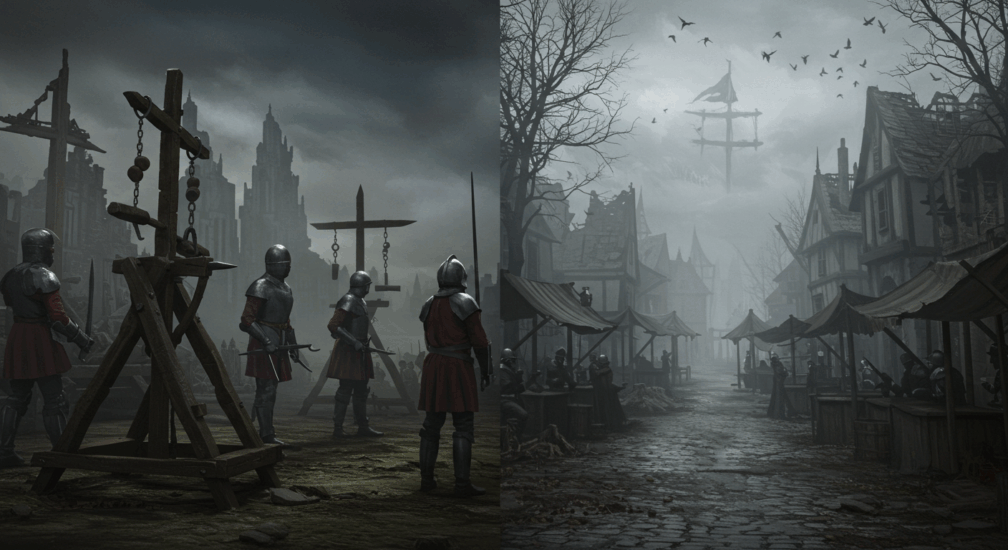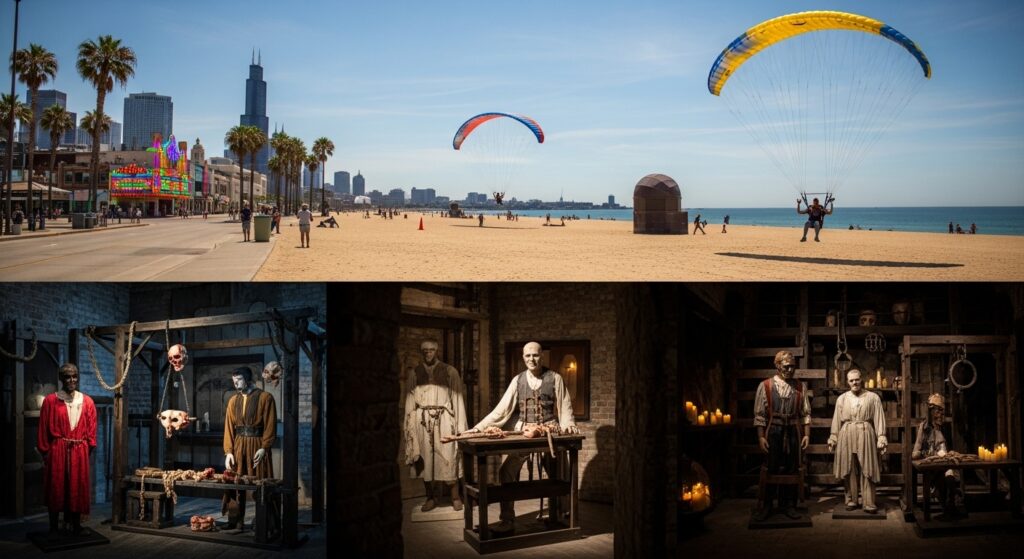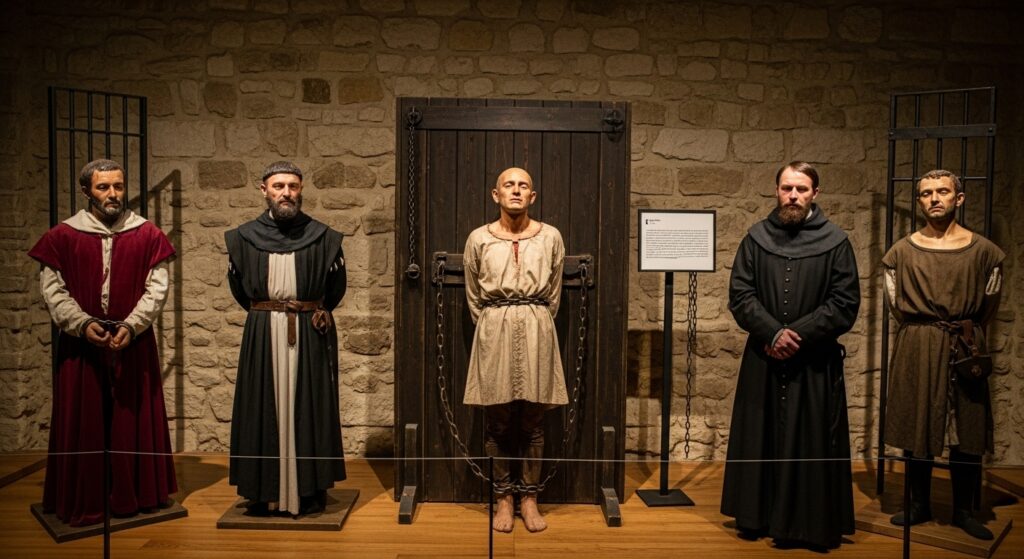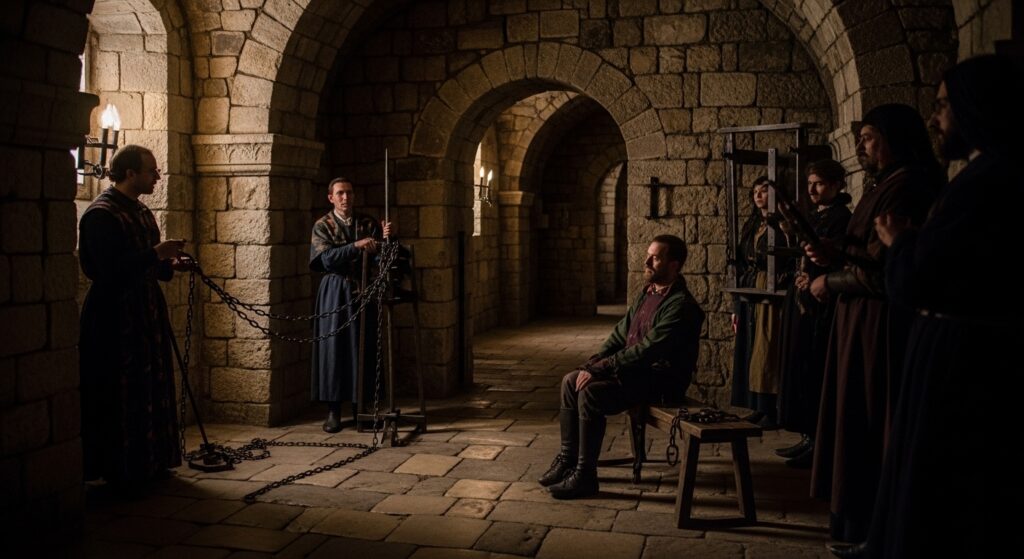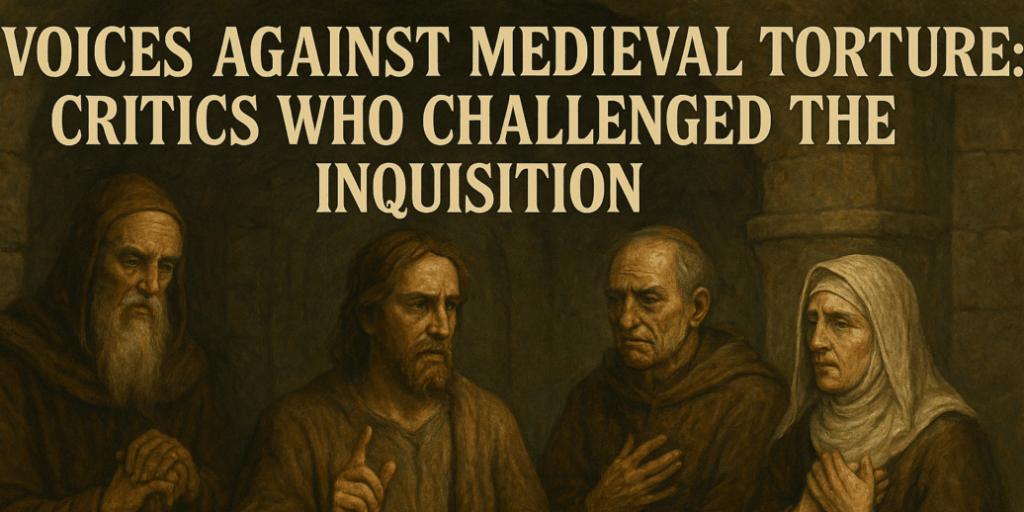Torture Beyond Pain
When we think of torture in the Middle Ages, what usually comes to mind is physical suffering, gruesome devices, and fear. But the real cost of torture went far beyond agony. It reached into the foundations of medieval society, draining resources, destabilizing communities, and reshaping economies. This was more than just punishment-it was a system with measurable consequences, still echoing today.
Torture as Public Spending in Medieval Times
It may seem strange to modern readers, but torture as public spending in medieval times was very real. Governments, feudal lords, and religious institutions invested in tools of pain: racks, iron maidens, and interrogation chambers were not only sanctioned, but budgeted.
Constructing torture chambers, paying executioners, maintaining prisons, and holding public executions were all seen as essential expenses under medieval governance. These funds often came from increased taxation on peasants and merchants, placing additional burdens on already struggling communities.
Financial Cost of Torture: Who Paid the Price?
The financial cost of torture was distributed unevenly. Nobility and religious orders may have orchestrated the system, but it was the common people who bore the weight.
Increased oppression often led to unrest, making communities harder to govern. Resources were funneled into punishment rather than infrastructure, trade, or welfare. The economic impact of medieval torture wasn’t just in gold spent-it was in opportunities lost and progress delayed.
Torture and Feudal Systems: Power at a Price
Feudal systems thrived on control. Torture provided a visible reminder of authority and consequence. In rural villages and medieval towns, torture served to enforce order through fear-but that social impact of torture came with a hidden cost.
Entire economies revolved around the maintenance of public punishment and social order. Local economies often adjusted to support executioners, build gallows, and maintain detention sites. This distorted the flow of resources and worsened inequality between the classes.
How Torture Affected Medieval Economy
So how torture affected medieval economy? Through the redirection of manpower, materials, and money. Skilled laborers were sometimes reassigned to build dungeons. Town squares became execution sites rather than markets. Economic decline followed as trade routes avoided towns known for violent spectacles.
The impact of torture on medieval communities was long-lasting. Not only did people experience direct hardship, but a culture of fear and silence slowed innovation, education, and commerce. In essence, torture taxed both the body and the mind.
Legacy of Brutality: Injustice as a System
The cost of torture in the Middle Ages wasn’t only financial-it was cultural. A system that normalized cruelty left a long legacy of injustice. People learned to accept suffering as part of life, embedding brutality into the social fabric.
Even today, museums and historical sites reveal this haunting past. The Medieval Torture Museum in Saint Augustine invites visitors to reflect on these legacies and the decisions of power and control made centuries ago.
What Can We Learn Today?
Understanding medieval justice and its economic effects helps us see how systems of violence can shape nations. It also helps us prevent modern forms of control and repression.
Those visiting the Medieval Torture Museum in Los Angeles can see not only the devices used but also explore the stories of people who endured them, and those who profited from them.
For travelers interested in chicago points of interest, the Medieval Torture Museum in Chicago offers an unflinching view into the cost of power and punishment.
Dive Deeper into the Darkness
This topic scratches the surface of history’s darkest accounting. From economic records to cultural conflict, the story of medieval torture is a complex one.To explore more chilling truths about justice, visit our blog for in-depth articles, expert commentary, and deep historical dives.
The Price of Pain
Torture in the Middle Ages was more than a tool-it was a system. It sustained feudal systems, drained economies, and shaped societies. The torture and economic decline of that era remind us of the cost of cruelty when it is institutionalized.
As the Medieval Torture Museum continues to document and display these truths, we are reminded that history’s darkest moments still hold lessons-if we dare to learn them.

